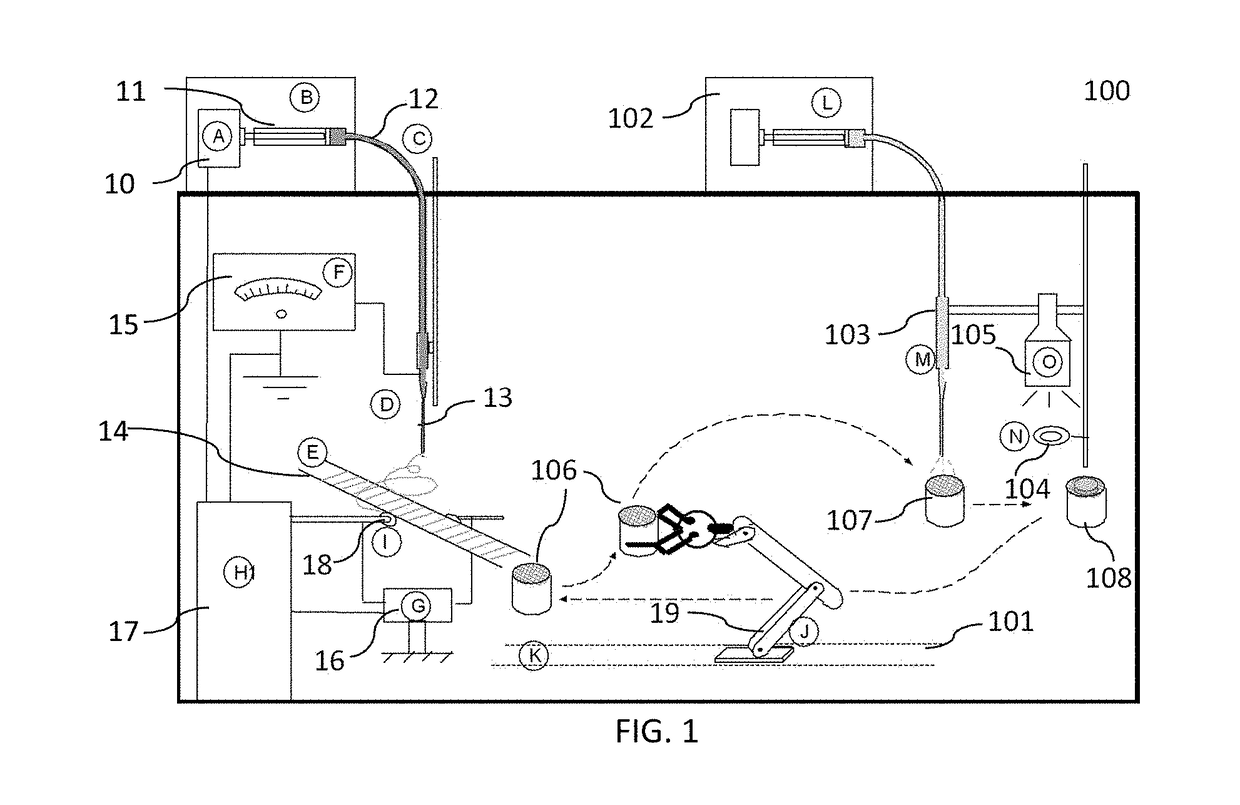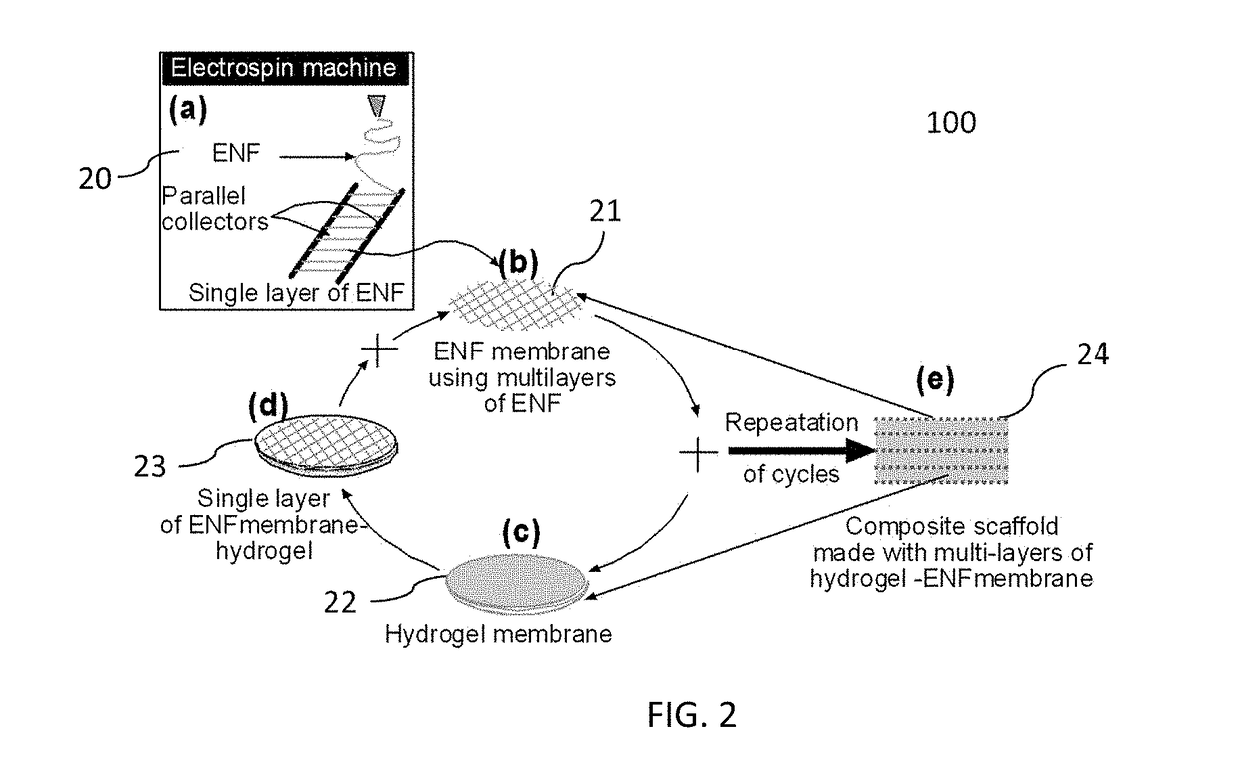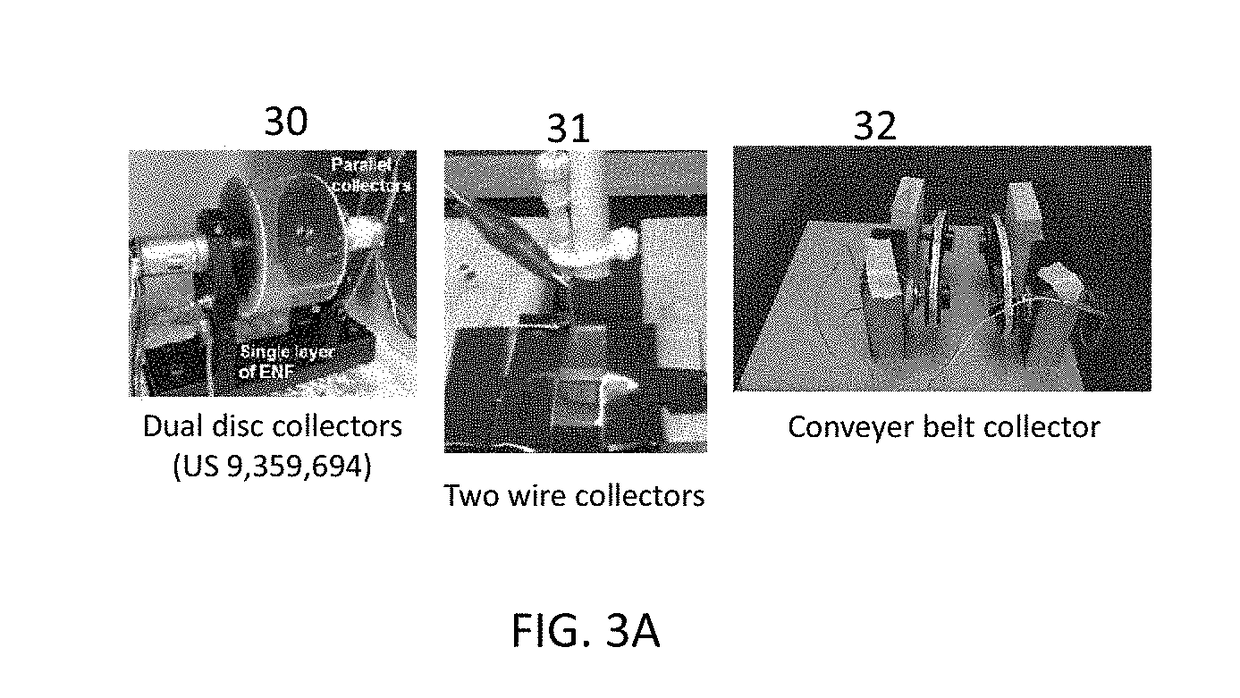Process to create 3D tissue scaffold using electrospun nanofiber matrix and photosensitive hydrogel
a nanofiber matrix and photosensitive hydrogel technology, applied in the field of polymer fiber production, can solve the problems of fiber matrix losing the porosity needed to grow cells in 3d, and it is not possible with current methods to maintain the alignment of fibers in the fiber matrix, etc., to achieve good mechanical strength, improve the initial and final setting time, and improve the effect of microstructur
- Summary
- Abstract
- Description
- Claims
- Application Information
AI Technical Summary
Benefits of technology
Problems solved by technology
Method used
Image
Examples
Embodiment Construction
[0048]In brief:
[0049]FIG. 1 is a non-limiting diagram showing a combined electrospin-UV photopolymerization unit for automatic production of 3D scaffold of the present invention. The systems (electrospin and UV polymerization systems) used to produce 3D scaffold can be combined as shown. Using the automatic system as shown any number of Polyethylene Glycol Diacrylate (PEGDA) layer and PCL matrix layers can be used to produce any shape of 3D scaffold. Such scaffold can be used as an engineering scaffold for grafting of natural tissue such as liver, skin, bone etc.
[0050]FIG. 2 is a non-limiting diagram showing a schematic view of the method of the present invention. The invention uses a novel approach of controlled application of aligned electrospun fiber layer and photosensitive biomedical polymer to create 3D scaffolds. The process of creating 3 layers of fiber-polymer matrix is schematically represented. The number of cross aligned fiber layers holds the polymer liquid in place and...
PUM
| Property | Measurement | Unit |
|---|---|---|
| thickness | aaaaa | aaaaa |
| thickness | aaaaa | aaaaa |
| diameter×1 | aaaaa | aaaaa |
Abstract
Description
Claims
Application Information
 Login to View More
Login to View More - R&D
- Intellectual Property
- Life Sciences
- Materials
- Tech Scout
- Unparalleled Data Quality
- Higher Quality Content
- 60% Fewer Hallucinations
Browse by: Latest US Patents, China's latest patents, Technical Efficacy Thesaurus, Application Domain, Technology Topic, Popular Technical Reports.
© 2025 PatSnap. All rights reserved.Legal|Privacy policy|Modern Slavery Act Transparency Statement|Sitemap|About US| Contact US: help@patsnap.com



